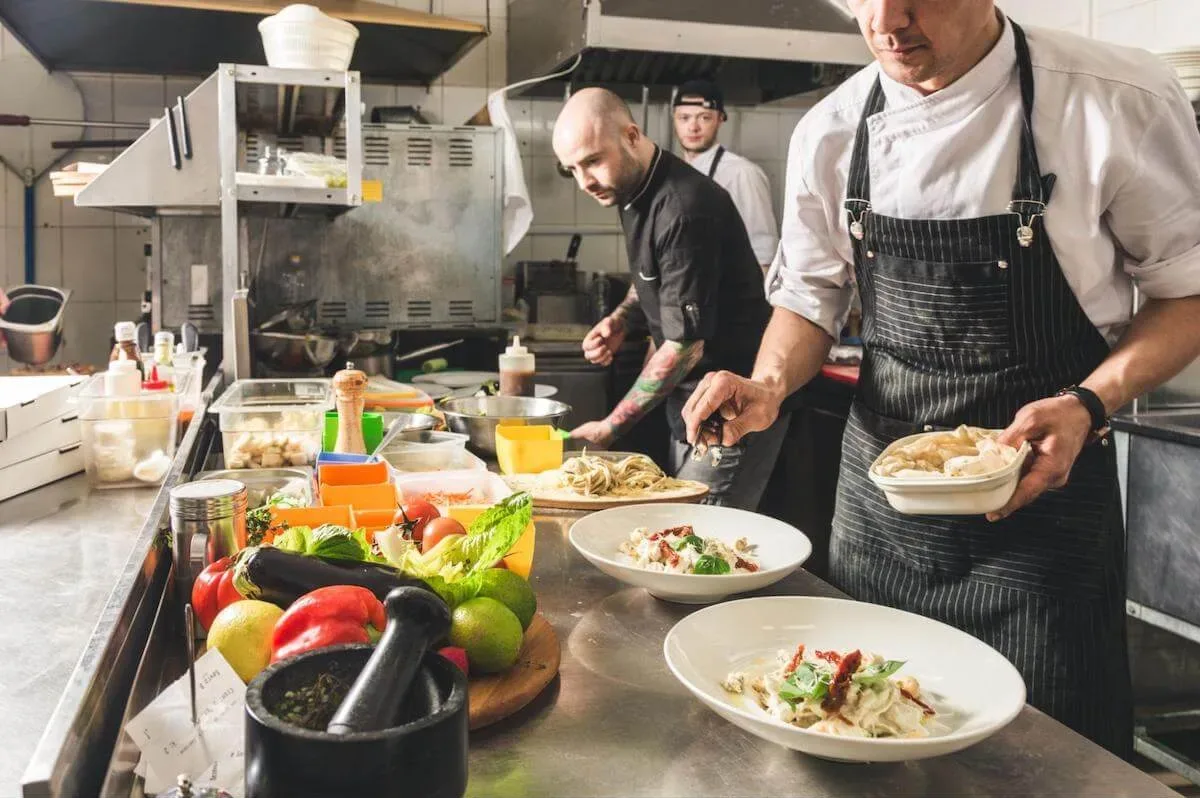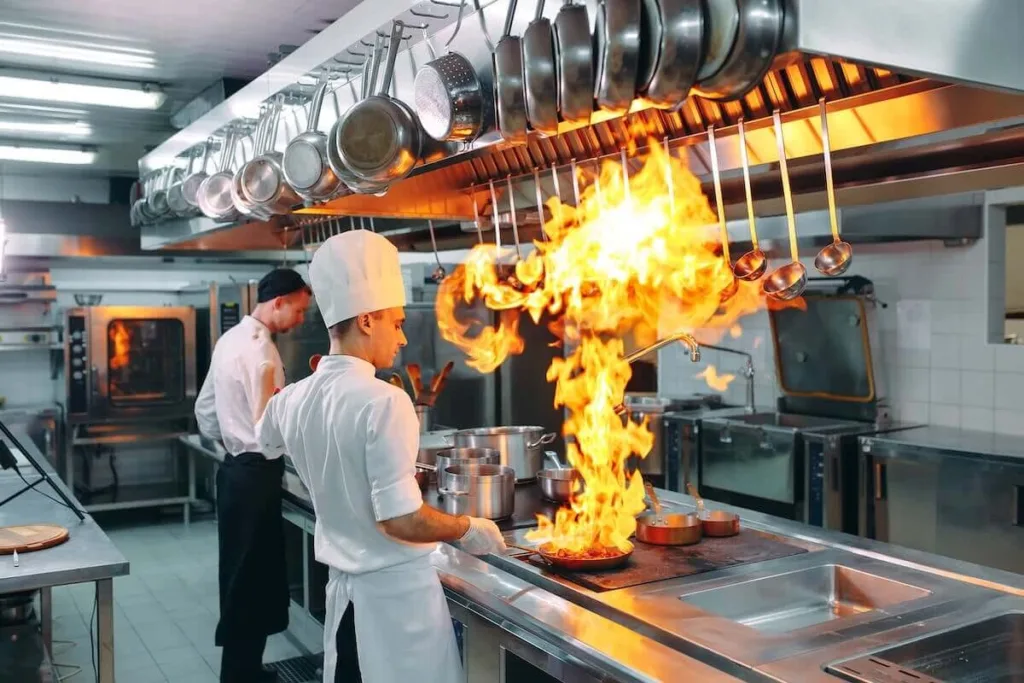8 ways to reduce restaurant expenses without cutting quality
Skip the article and turn takeaways into action by scheduling a call with our team.
Running a restaurant is a labor of love, but it’s also a constant battle to keep numbers in the black. Between rising food costs, unpredictable labor expenses, and the ever-present overhead, profitability can feel like a moving target. Experienced restaurateurs often learn the hard way that managing restaurant expenses isn’t just about slashing budgets—it’s about making smart, strategic choices that keep the doors open and the customers happy.
Here, we’ll check out some ways to cut costs without sacrificing quality and the all-important customer experience. This will explore average restaurant expenses before providing a practical roadmap to tame them.

Understanding restaurant expenses
Restaurant costs cover a lot of bases, but generally fall into two categories: fixed costs and variable costs. Since the majority of operating costs are variable, restaurant owners can look to improve their bottom line by zooming in on those. Before we get to any cost savings, however, we’ll look at specific cost categories to focus on.
Without proper oversight, expenses can quickly spiral out of control. Restaurant owners who build a solid budget and expense projections can avoid that problem by tracking specific metrics to see where costs can be improved.
Food and beverage costs
A restaurant’s cost of goods sold (COGS) represents the amount spent on ingredients, all the way from major items like meat down to little things like sesame seeds. Typical food cost percentage is around 30-35% of total sales. This is why a good rule of thumb is that a menu item should cost 3x the ingredients that go into it. Of all places to save money, COGS is usually the first on the table as it’s variable.
Restaurant labor costs
Labor costs make up another significant part of expenses in the restaurant business. Typically, labor costs hover around 30% of total sales, though they can be higher in fine dining restaurants and lower in fast food or quick-service restaurants. If a restaurant sees costs north of 35% there can be problems, while keeping labor costs under 30% can lead to increased restaurant profits.
Labor costs are typically considered fixed though they’re really semi-variable, since a restaurant can’t function without labor. Included in labor costs are all associated expenses: payroll taxes, uniforms, employee benefits, and vacations.
Overhead
Overhead costs like rent or mortgage payments, utilities, and insurance are non-negotiable restaurant expenses. How much owners spend on rent can vary widely by it’s specific needs and location—renting a location in Manhattan, Kansas, is much cheaper than in Manhattan, New York. Overhead is not considered variable.
Overhead also includes fixed expenses like property taxes, fees, and licensing requirements.
Equipment and maintenance
Equipment is also non-negotiable: No equipment, no restaurant. Restaurateurs can keep expenditures down with some strategies in equipment which we’ll cover later. However, having quality equipment trumps having cheap equipment any day, since it improves workflows as well as employee morale. Equipment and maintenance are variable costs.
Marketing, software, and miscellaneous restaurant expenses
Marketing typically takes up around 3-6% of a restaurant’s revenue. Generally, cutting a marketing budget is unwise as it provides a significant return on investment when done correctly. Many restaurants end up paying a fair amount on software subscriptions, which can get out of hand. Miscellaneous expenses can mean all sorts of things in the restaurant world, from storm damage to unanticipated fines, so having a good cash reserve or line of credit can help mitigate problems. These are all considered variable costs.
Cost-saving strategy #1: Optimizing food costs

Food is the lifeblood of a restaurant, but it can also be a money pit if you don’t watch it. For the average restaurant, the best way to keep costs down is to optimize food costs. Doing so can be broken down into two types of optimization: defensive and offensive.
Defensive strategies focus on keeping costs down. Examples include:
- Optimizing inventory management to limit food waste due to spoilage and cut unnecessary items. Inventory management software can help a great deal with this task
- Swapping out ingredients seasonally to ensure lower prices as well as freshness
- Buying in bulk for lower prices or negotiating with food suppliers for discounts
- Axing non-performing menu items
- Reducing portion sizes (for example, if you see too many customers leaving with leftovers)
- Buying durable items like takeout containers in bulk
Offensive strategies aim to sell more high-profit items while optimizing menu prices. Examples include:
- Practicing menu engineering to get a detailed menu item cost breakdown and categorize them into categories of sales volume and COGS
- Further optimizing your menu to encourage sales of high-profit items like pasta over pricey items like premium cuts of meat
- Training staff to upsell items like desserts or drinks
- Offering creative specials to sell inventory bought in bulk or inventory that’s nearing its expiry date
Check out our detailed breakdown on how to control food costs.
Cost-saving strategy #2: Streamlining labor expenses
As labor is a semi-variable expense, restaurants can save money with some solid strategies that don’t simply involve looking at hourly wages at or around minimum wage. Labor costs can fluctuate over time depending on a restaurant’s needs.
To determine your labor cost percentage, use this formula:
Labor cost percentage = (Total labor costs / Total revenue) x 100
If your labor cost percentage is higher than 30-35%, you may want to consider the following options.
First, restaurateurs can practice staff cross-training to reduce overstaffing and prevent snags if a key employee has a sick day or quits. This can be fairly straightforward: Servers can learn to bartend or vice versa, and managers can fill in at multiple roles when necessary.
Second, restaurants should look to efficient scheduling based on peak and slow periods. This can be especially important considering longitudinal data, e.g. if summers are typically busier than winters or if certain holidays require more staff. Smart scheduling software can help with this task.
Third, restaurants will want to leverage technology to support staff and take a load off of all aspects of staff work. Examples include adding a kiosk check-in system like Yelp Kiosk to support front-of-house (FOH) staff with reservations and check-ins, kitchen display systems and tableside ordering point of sale (POS) systems to streamline communications, and overall FOH management software like Yelp Guest Manager to improve all aspects of restaurant service (more on that later).
Fourth, restaurants can offer performance incentives instead of offering blanket raises for staff. Making raises or bonuses contingent on success encourages employees to do their best at all times and can lead to improved service.
Fifth, restaurants will want to retain top-notch staff as long as possible, especially since training new staff can cost thousands of dollars. Offer an upwards career path and reward loyal employees whenever possible.
Cost-saving strategy #3: Reducing overhead costs
Some overhead costs can be brought down, but restaurant owners can quickly find they hit diminishing returns on their efforts. Focus on a few key areas to keep overhead as low as possible:
- Implement energy-saving measures wherever possible to keep utility costs down. Upgrade to efficient appliances and lighting, for example. Bear in mind these upgrades are tax deductible, so the cost doesn’t have to be scary.
- Renew insurance policies to consolidate plans and check for more competitive rates.
- Renegotiate lease terms or explore shared spaces with other restaurants or businesses to keep rent costs low.
- If possible, consolidate utility vendors for lower overall utility bills.
Cost-saving strategy #4: Smart equipment and maintenance management

Major kitchen equipment like ovens, walk-in refrigerators, grills, and so on can be expensive but these restaurant expenses are critical to success. There are a few ways to keep costs down without losing quality here:
- Invest in durable, energy-efficient equipment to avoid regular repairs. As mentioned above, keep in mind equipment purchases are tax-deductible, so opt for quality over price.
- Practice regular preventive maintenance to extend equipment life.
- Consider leasing equipment instead of buying it. Equipment that’s leased often comes with a service agreement that takes the burden of repairs off a restaurant owner’s hands.
- Where possible, repurpose or repair equipment instead of replacing it.
Cost-saving strategy #5: Marketing on a budget
Restaurant marketing is in a new world compared to just a couple of decades ago, and marketing can be done on a shoestring budget. That said, rather than cutting the typical marketing cost of 3-6% of restaurant expenses, it’s wise to keep track of marketing costs and see where the money is best spent, i.e. which campaigns are most effective.
- Lean into social media marketing instead of traditional expensive ad campaigns. Conduct rapid-fire short-form video posts on platforms like TikTok and Instagram—with the wet-spaghetti-on-the-wall technique, you stand a chance to go viral.
- Partner with local businesses for cross-promotions. Building a network of businesses can be the rising tide that lifts all boats in your area.
- Focus on restaurant loyalty programs that aim for customer retention at affordable rates.
- Analyze your marketing ROI to eliminate low-impact efforts. Track engagements, replies, and followers gained across social media platforms to see what kind of campaigns and posts work best.
- Look to advertise on high-impact sites like Yelp with a large customer base and optimize your Yelp My Business page.
- Engage with reviews on review sites, both negative and positive, to reach the most customer possible.
Cost-saving strategy #6: Conduct regular expense audits

Having an overview of your restaurant expenses both in your head and on paper can keep your eye on the prize: Maintaining quality service without breaking the bank. Having both an intuitive and detailed sense of this will guide all operations to lowered expenditures.
- Conduct monthly, quarterly, and yearly expense audits. Check all metrics against budgets and guidelines, e.g. food cost percentage and labor cost percentage.
- Keep an eye on taxes. Take as many deductions as possible to keep your tax burden down. Work with a CPA—the cost spent will save money.
- Look to fluctuations in expenses and revenue over time. Use your month-to-month and quarterly data to make staffing and inventory decisions.
- Adjust prices as necessary to reflect increasing costs in food. Customers are well aware of inflation—if you raise prices, leave a note as to why.
Cost-saving strategy #7: Balance cost-cutting with quality
Balancing quality and costs is a tightrope act that every successful restaurant must practice. Skimp on ingredients and that signature dish will taste off—customers will notice. Test changes small to start: If you’re optimizing your menu, work from the bottom up in ingredient cost. Customers will absolutely take note if your portion sizes shrink or your meat quality drops, and they’ll react negatively. Swapping out sides for seasonal ingredients is much less likely to elicit a negative response.
Explain the why and how of cost savings to staff so they can be on-board with the day-to-day operations of minimizing restaurant operating costs. A team that’s pulling in the same direction can improve profit margins, especially if incentives are in place.
Pay attention to customer feedback after any cost-cutting initiative and use that as your north star. If positive feedback continues or ramps up, great! If not, take complaints seriously and focus on quality above cost—nothing matters if customers stop coming.
Cost-saving strategy #8: Lean into tech for cost savings

Restaurants can get a great deal of mileage and reduce operating expenses out of upgrading their restaurant tech. For starters, POS systems that allow for tableside credit card processing save on labor costs by making work easier for FOH staff.
Switching to a FOH software suite that handles all aspects of restaurant management can be a huge bonus. That’s where Yelp Guest Manager comes in. It allows for fully-customizable table service, syncs with all the best POS systems and inventory management systems, and ties it all together in one easy-to-use tablet-based system. It also collates data to assist in smart choices when looking to make cuts to restaurant food costs and parse month-to-month data.
What’s more, it makes online reservations, check-ins, and waitlists a breeze, automating most of the work. This can help reduce staffing needs and allow restaurant owners to focus on the best part of the business: making customers happy.
Want to see what it’s about? Curious how it can help reduce your costs? Reach out to us for a free demo.